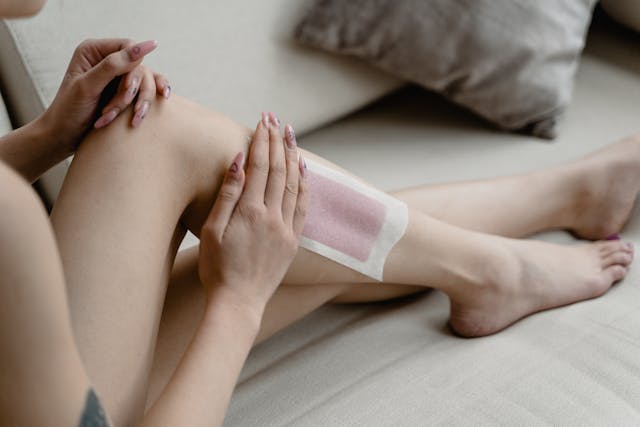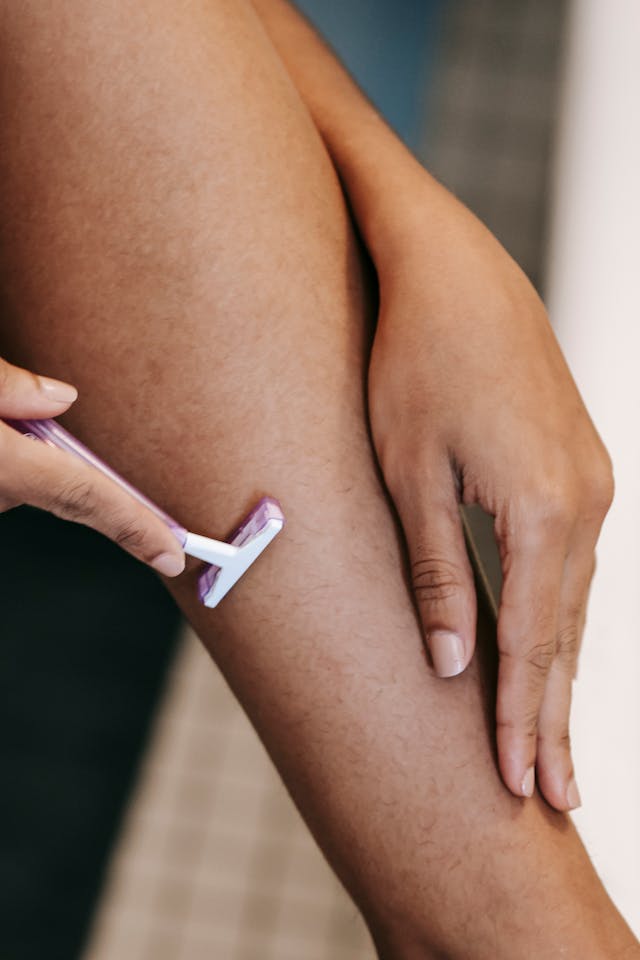
While having hair-free skin is also aesthetically preferred by many as they choose a smooth and clean appearance, getting hair removal has benefits beyond looking good on the beach. Aside from boosting self-confidence, having less hair is hygienic because it prevents bacteria buildup and reduces body odor. It is also beneficial for specific activities, such as competitive swimming. The need for hair removal will always be persistent. With current trends among women and with favorable shifts in male grooming habits, this industry is projected to grow to be a USD 1.89 billion industry by 2032.
Pros and Cons of Waxing and Other Hair Removal Methods
From home options such as plucking and shaving to high-tech options such as laser hair removal, people have a variety of options to address their need for hair removal. In this article, we share a few of the most popular alternatives and present their pros and cons to help people make informative choices that fit their needs.
Hair Removal Options Available at Massage and Wellness Collective
Shaving

Shaving is a hair removal method familiar to most people because it is introduced to us when we are young. Moreover, the things we need for shaving are readily available on supermarket shelves, and improvements in razor design have made them safe for many people to use.
Shaving works by curing off hair at the skin’s surface using one or a few different types of razors, ranging from inexpensive razors over wet skin to precise electric razors designed to work over dry skin
Pros:
- Affordability and Availability: Razors are readily available anywhere.
- Easy to Learn: People learn to use razors from an early age.
- Ease of Use: Shaving is quick and easy to perform.
Cons:
- Razor Burn: Shaving may cause cuts, nicks, and skin irritation.
- Unsightly Hair Appearance During Regrowth: The tip of shaved hair is blunt instead of tapered, making it more noticeable.
- Ingrown Hairs: This may happen after shaving.
Tweezing
Not to be confused with plucking, tweezing involves using tweezers. Because of their shape, tweezers are ideal for removing stray hairs around the eyebrows, allowing proper shaping. Like plucking, it takes a long time, from three to eight weeks, for hair to grow back after tweezing.
Pros:
- Precise Hair Removal: Tweezers make hair removal more precise than plucking with fingers, making them ideal for shaping clumps of hair, such as eyebrows.
- Affordable: All you need to perform this process are tweezers. However, you must pick the appropriate tweezers to remove hair for specific body parts. For instance, eyebrows require slanted tweezers, while pointed tweezers are more suited to plucking out ingrown hair.
Cons:
- Time-Consuming: Tweezing takes time because you need to remove hair strands individually.
- Limited Coverage: Because it takes time to remove each individual strand, tweezing is not intended for use on larger body parts, such as arms and legs.
Plucking
Though time-consuming, pulling hair physically is an affordable and easy way to remove it. Unlike tweezing, plucking does not require specific instruments and is limited to removing stray hair that can be pulled out using fingers.
Pros:
- Affordability: Unless hair removal or numbing creams are involved, plucking costs nothing at all.
- Hair Takes Longer To Grow Back: Plucking hair at the roots can damage the follicle, preventing hair from growing back again. While plucking will slow down hair growth temporarily, it will eventually grow back in most cases.
Cons:
- Plucking Hurts: The skin’s surface has many nerve endings, making hair-pulling painful. Moreover, some hair strands are stubborn and may require several attempts to pull out.
- Hair Plucking May Cause Trichotillomania: Trichotillomania is a compulsive disorder that may arise in some people after they make hair plucking a habit.
Waxing
Waxing is an efficient way of removing hair in numbers by applying a sticky substance in the form of wax. Once the wax sets, hair can be pulled off from the root, resulting in smoother skin. Hot, warm, and soft wax are the three most popular types of waxing.
Pros:
Variety:
- Hot wax is made from a mixture of beeswax, resin, and oil. It is applied hot and adheres well to hair and skin.
- Warm wax is a variation of hot wax, though it can be applied at a lower temperature, making it ideal for sensitive skin.
- Soft wax is applied thinly over the skin and involves a strip of cloth when removed, making it a preferred method for removing hair from larger skin areas such as the back.
- Effective on Large Areas of the Skin: Waxing is specifically designed to remove hair in larger areas. Moreover, the hair removal process is quick and efficient.
Cons:
- Burning: Especially in the case of hot wax, waxing may burn the skin if done haphazardly.
- Discomfort: Because waxing pulls a substantial number of hairs out by the root at the same time, it may be painful.
These Are General Methods Offered in the Skincare Industry
As of today, unfortunately, we don’t offer these hair removal methods at our current location at this time. We are including these for comparison purposes only.
Sugaring
Sugaring, also known as Sugar Waxing, is a natural alternative to conventional waxing. It uses a sugar-based paste often composed of sugar, water, and lemon juice and is often less painful than waxing. The paste is applied, set, and then pulled off in the same direction of hair growth to remove hair from the root.
Pros:
- Easy to Remove: Since it is water-soluble, sugaring is easier to clean up than conventional wax.
- Natural Ingredients: Sugaring is safe for people allergic to harmful chemicals in conventional wax.
Cons:
- Pain and Discomfort: Sugar waxing can be painful. Like conventional waxing, sugar waxing involves pulling hair, which can cause discomfort.
- Isotretinoin Restrictions: Sugaring should be avoided for six months after taking isotretinoin, a medication used for addressing cystic acne.
Laser Hair Removal
Laser hair removal aims to reduce or permanently remove hair. It requires multiple sessions spread over several weeks to achieve the desired results. Unlike earlier cited hair removal methods, laser hair removal uses precise equipment handled by professionals. The lasers target hair pigments at various amplitudes, wavelengths, and pulse widths to vaporize them.
Pros:
- Hair Regrowth Will Take Longer: It may take several months or years for the hair to grow back. Hair regrowth is less noticeable.
- Precision: When done correctly by trained professionals, the results of laser hair removal are precise, resulting in smooth skin.
- Best for Light-skinned People with Dark Hair: Ideal results benefit lighter-skinned people with dark hair because the lasers also target melanin, or the dark pigment, in the hair.
Cons:
- Cost: Laser hair removal is expensive because it requires specialized equipment and trained professionals to use them.
- Requires Multiple Visits: Ideal results can only be achieved after multiple visits.
- Redness or Swelling Similar to Sunburns: Clients may experience temporary sunburn-like redness or swelling in the treated area right after treatment.
Depilatory Creams
Depilatory creams dissolve hair using chemicals. They contain thioglycolate and alkaline substances. Thioglycolate breaks the hair’s disulfide bonds, while alkaline substances soften the hair and dissolve keratin. This process weakens the hair, making it easy to remove.
Pros:
- Ease of Use: Depilatory creams are easy to apply and can be used at home.
- Affordability: Depilatory creams are generally more affordable than professional hair removal methods, such as sugaring, laser hair removal, and waxing.
- Quick Results: The hair removal process takes a short time.
- Suitable for Sensitive Skin: Some depilatory creams are formulated for specific skin types and for sensitive skin.
Cons:
- Results are Not Long-Lasting: Hair typically grows back after a few days or weeks.
- Risk of Chemical Irritation: Certain individuals may experience skin irritation or allergic reactions to chemicals in depilatory creams. Testing these on a small patch of skin is important to check for allergic reactions.
- Unpleasant Odor: Depilatory creams have a strong, unpleasant odor.
- Burn Risk: Washing away depilatory creams is necessary to reduce the risk of strong chemicals staying on the skin for too long.
Threading
Threading is a method for removing hair using a cotton thread rolled and twisted over the hair to pull it out. It is suitable for removing hair in smaller areas, such as eyebrows.
Pros:
- Precision: Threading is highly precise, and ideal for shaping eyebrows and removing unwanted facial hair.
- Suitable for Sensitive Skin: Threading is ideal for people with sensitive skin because it is precise and less likely to irritate than hair removal methods involving topical application of chemicals, such as depilatory creams or waxes.
- Long-lasting Results: Hair will grow back for longer periods because it was pulled out from the roots, like in plucking.
Cons:
- Time-Consuming: Threading can be time-consuming when removing hair on larger areas.
- Potential for Discomfort: Though less painful than waxing, threading may still cause discomfort for people who are trying out hair removal for the first time.
- Skill-Dependent: Threading requires skill and experience to perform effectively.
- Risk of Micro-Tears: Threading can cause micro-tears in the skin if done incorrectly.
Electrolysis
Electrolysis is a hair removal method that permanently destroys hair follicles by inserting a needle and delivering an electrical current.
Pros:
- Permanent Hair Removal: Since follicles are destroyed, hair is not expected to grow back, so maintenance won’t be necessary.
- Can Work On Any Hair Color: Since follicles are addressed, pigmentation and hair color issues are not a concern.
Cons:
- Expensive: Electrolysis is performed with specialized equipment used by an electrologist in multiple sessions.
- Time-Consuming: This process takes time because each follicle is destroyed individually.
- Burn Risk: Heat and chemicals involved in this hair removal process might cause scarring, skin irritation, and unwanted pigmentation.
Choosing the Right Hair Removal Method
The decision of which hair removal method to choose depends on various factors, including personal preference, desired results, budget, and skin sensitivity. Shaving, plucking, waxing, tweezing, sugaring, laser hair removal, electrolysis, and depilatory creams offer a range of options to suit different needs. Consider both the pros and cons of each method carefully and consult with a professional if necessary to make a safe and informed decision. By understanding the available options and their associated benefits and drawbacks, you can select the hair removal method that best meets your individual requirements and helps you achieve your desired level of hairlessness.
Are you tired of unwanted hair? Explore the benefits of professional waxing and other hair removal treatments at Massage and Wellness Collective.
